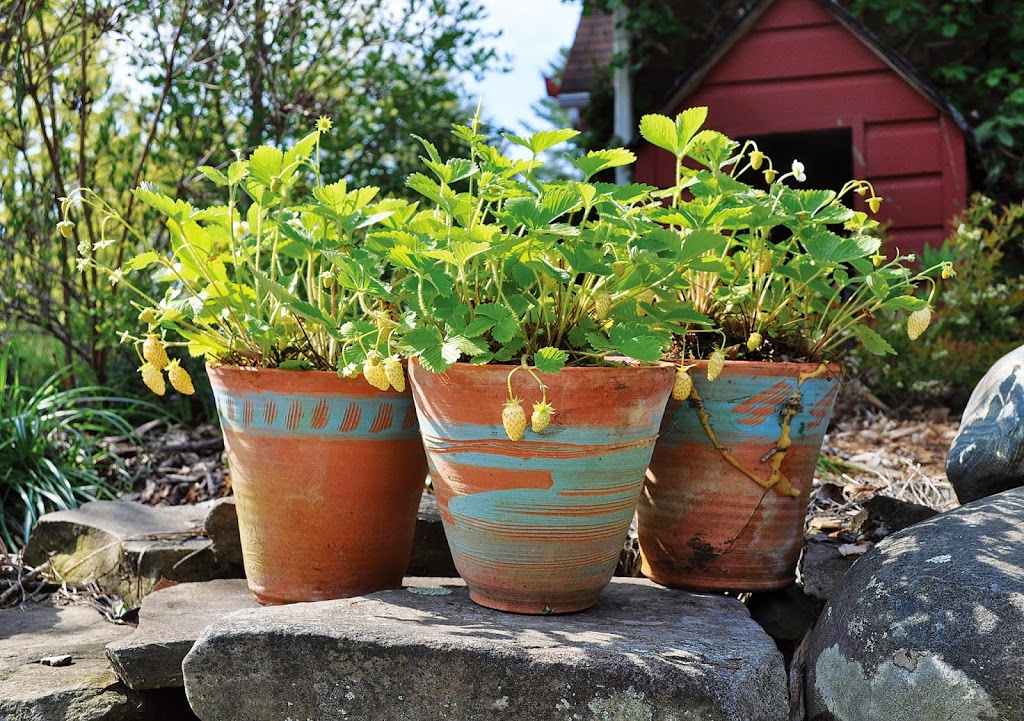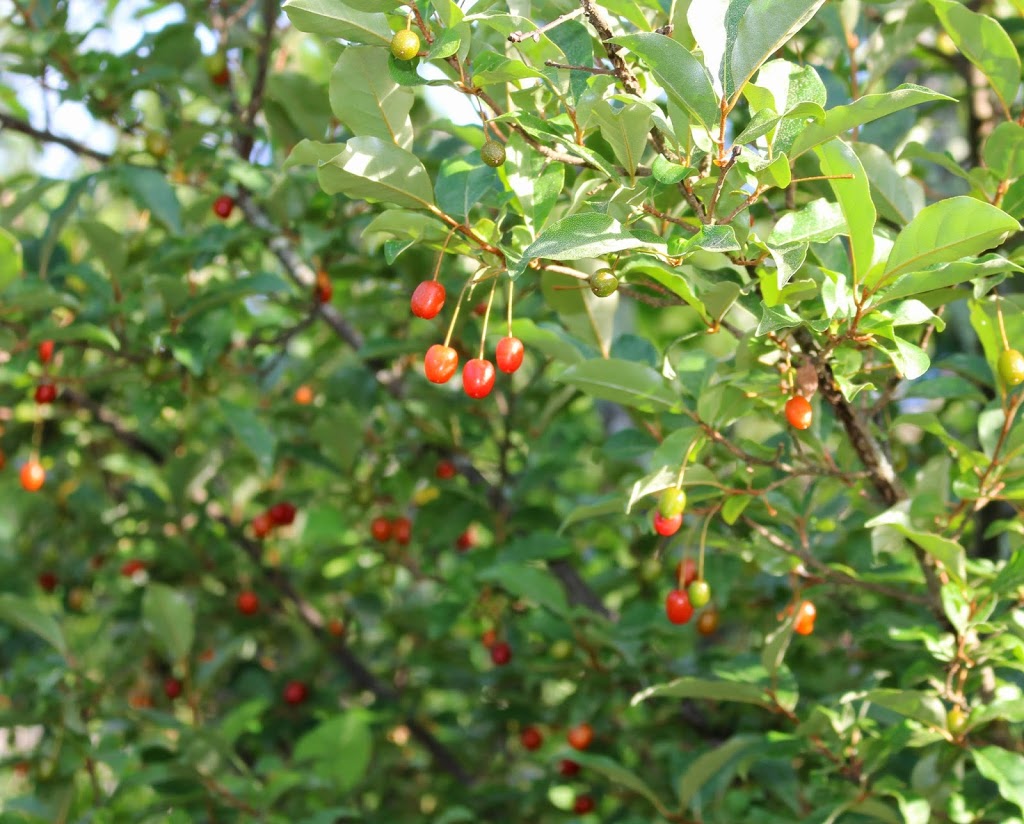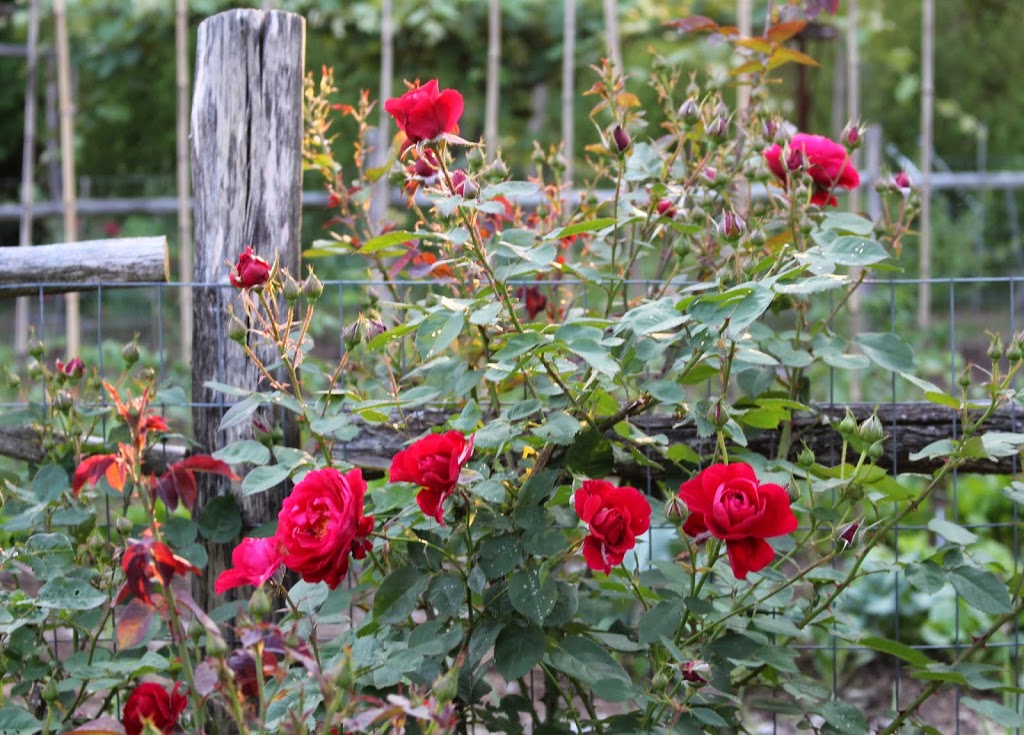SOME THINGS FOR SOME SENSES
Visual Delight, and some Aroma
I once grew a rose, Bibi Maizoon, that I considered to be as close to perfection as any rose could be. Its blooms, that is. They were cup-shaped and filled with loosely defined row upon row of pastel pink petals, nothing like the pointed, stiff blossoms of hybrid tea roses. Completing the old-fashioned feel of Bibi Maizoon blossoms is the flowers’ strong, fruity fragrance.
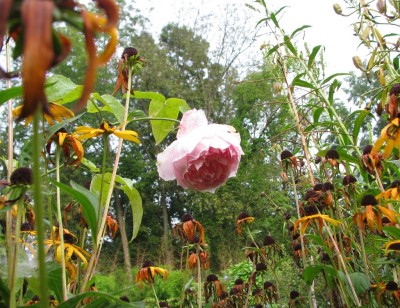
(In case you don’t know who Bibi Maizoon was, she was a member of the royal family of Oman. The Bibi Maizoon rose was bred by British rose breeder David Austin.)
The bush itself was as imperfect as the blossom were perfect. Where to begin? For starters, the thin stems could hardly support the corpulent blossoms. Couldn’t, in fact, so the blossoms usually dangle upside down. Upside down blossoms were not that bad because I considered Bibi best when cut for vases indoors to better appreciate her rare appearances and fragrance.
Top those deficiencies with the fact that Bibi Maizoon was also only borderline cold hardy in my garden and you would rightly guess that I no longer grow this rose.
I haven’t abandoned David Austin roses. I generally like them for their old-fashioned look: the bushes are, well, bushy and full; the blossoms have softer colors than those of traffic-stopping hybrid tea roses; and they are disease resistan and strong-growing.
I’ve previously praised the variety L. D. Braithwaite for its almost nonstop, dark red blossoms, red tinted leaves, and ability to laugh off any amount of cold. Three other varieties — Golden Celebration, Lady of Shallot, and Dame Judi Dench — came into my garden in the last year, their blossoms with varying degrees of yellow, the first a pure golden yellow, the second apricot-yellow, and the third apricot orange. Delicious. They all seem, so far, near-perfect.
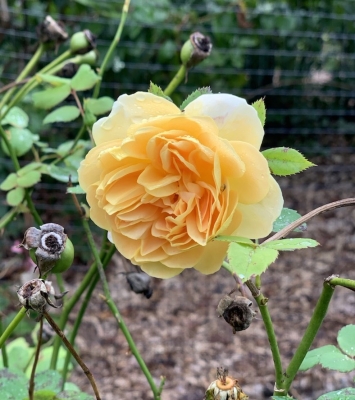
Golden Celebration rose
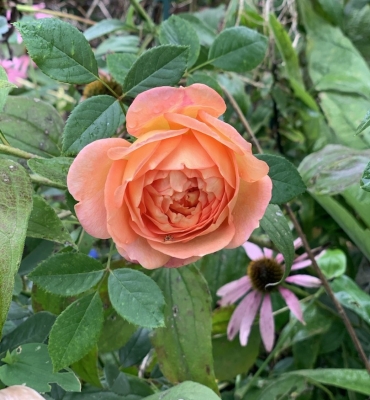
Lady of Shallot rose
Organoleptic Delight, and also Beautiful
Ellison’s Orange is as unknown to most people as is Bibi Maizoon. It’s an apple, an old and very delicious apple, and, oddly enough, ripening right now. Everywhere else I read that this apple is supposed to ripen later in September and on into October, yet every year my Ellison’s Orange fruits ripen about this time of year.
Like Bibi Maizoon, Ellison’s Orange has its good and bad sides. On the plus side, it bears very well and at a young age. It also seems to be somewhat resistant to scab and cedar apple rust diseases, contradicting other sources on this point also. And what a beauty the fruit is, with its orange blush over a yellow background.
For me, the downside of this variety is the absolute necessity to pick it at just the right moment. One day an apple seems puckery underripe; the next day it might be sleepy and soft. If I harvest very carefully, I catch an apple at its delectable best, which is sprightly with an intense flavor that hints of anise seed.
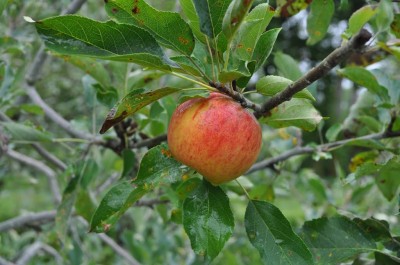
I made my tree from a piece of stem whose cells trace back over a hundred years, to the garden of a Reverend Ellison in Lincolnshire in the east of England. The parents of the reverend’s new apple weren’t lightweights. One parent, Cox’s Orange Pippin, the king of British apples, has an intense flavor that sometimes hints of anise seed. The other parent, Calville Blanc, an old French apple popular in the court of King Louis XIII, has a spicy flavor with just a hint of banana. No wonder Ellison’s Orange tastes so good – as long as I catch it at the right moment.
Another Tasty Delight
If you buy corn at a farmstand or market these days, no need to have boiling water ready, as gardeners did in the past to stop enzymes from starting the conversion of kernels from sugary sweet to starchy bland. Two genes incorporated into modern corn varieties dramatically slow this flavor decline. They also ratchet up the sugars, making modern corns supersweet to begin with.
Call me old-fashioned, but my favorite variety of sweet corn, the only variety that I grow, is the old variety Golden Bantam, which lacks those modern corn genes. Although not nearly as sweet as modern hybrids, Golden Bantam has a very rich corny flavor with – to some tastes — just the right amount of sweetness.

Golden Bantam, a hit since 1906
Golden Bantam was introduced into the seed trade in 1902 by W. Atlee Burpee Company, who got their original 2 quarts of seed from New York farmer William Coy, who had tasted and enjoyed eating some ears at his cousin’s house in Massachusetts. Long story short: Everyone fell in love with Golden Bantam and it became the most popular corn of its day. An article in The Boston Transcript of 1926 states that “In the twenty-four years since [1902] it has made more friends than anyone else could make outside the movies. Which proves that popularity does sometimes follow real merit.” It’s an odd way to compliment but you get the picture.
Golden Bantam pre-dates hybrid varieties, the latter of which, in addition to other characteristics, ripen very uniformly. In a backyard garden, a whole bed of corn ripening at once isn’t necessarily a plus. I want to eat some corn every day, with a little extra each day for freezing.

My four beds of corn, the first planted in mid-May (around the date of our last-killing frost of spring) and the subsequent beds staggered every two weeks, provides just that. We’ve eaten corn almost every day since each mid-August and Golden Bantam shows no signs of slowing down or boring us.

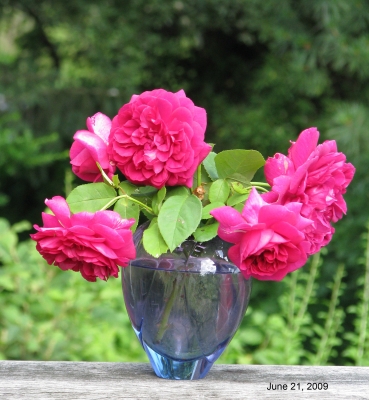 After a few years of watching the weakened plant recover each season, I made cuttings from some of the stems. The cuttings rooted and the new plants, rather than being grafted, were then growing on their own roots. Even a cold winter wouldn’t kill the roots, living in soil where temperatures are moderated. If the stems died back to ground level, new sprouts would still sport those dark, red blossoms.
After a few years of watching the weakened plant recover each season, I made cuttings from some of the stems. The cuttings rooted and the new plants, rather than being grafted, were then growing on their own roots. Even a cold winter wouldn’t kill the roots, living in soil where temperatures are moderated. If the stems died back to ground level, new sprouts would still sport those dark, red blossoms.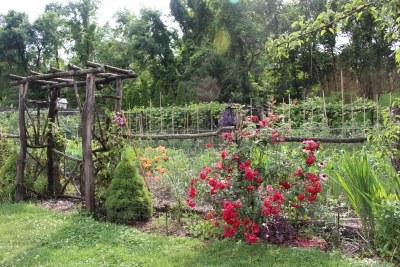
 Putting up the net always brings the words of fruit breeder Dr. Elwyn Meader to mind. When I visited him back in the 1980s, the old New Englander, still active in his retirement and growing about an acre of blueberries, among other crops, recounted in his slow, New Hampshire accent, “It takes a patient man to net an acre of blueberries.” Covering my two plantings encompassing a total of about a thousand square feet always creates a little tension.
Putting up the net always brings the words of fruit breeder Dr. Elwyn Meader to mind. When I visited him back in the 1980s, the old New Englander, still active in his retirement and growing about an acre of blueberries, among other crops, recounted in his slow, New Hampshire accent, “It takes a patient man to net an acre of blueberries.” Covering my two plantings encompassing a total of about a thousand square feet always creates a little tension.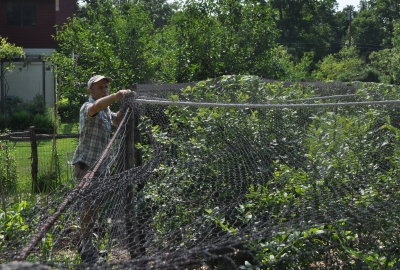 I now feel like a captain setting sail on an old sailing vessel, with all the sails trim and masts set. Except rather than sails and masts, it’s a blueberry net that’s spread tightly over the permanent, 7-foot-high perimeter of locust posts and side walls of anti-bird, plastic mesh. That netting covers 16 bushes within a 25 foot by 25 foot area. Rebar through holes near the tops of the locust posts keeps that side wall mesh taught and 18” high chicken wire along the bottom keeps rabbits, which love to teethe on that plastic mesh, from doing so.
I now feel like a captain setting sail on an old sailing vessel, with all the sails trim and masts set. Except rather than sails and masts, it’s a blueberry net that’s spread tightly over the permanent, 7-foot-high perimeter of locust posts and side walls of anti-bird, plastic mesh. That netting covers 16 bushes within a 25 foot by 25 foot area. Rebar through holes near the tops of the locust posts keeps that side wall mesh taught and 18” high chicken wire along the bottom keeps rabbits, which love to teethe on that plastic mesh, from doing so.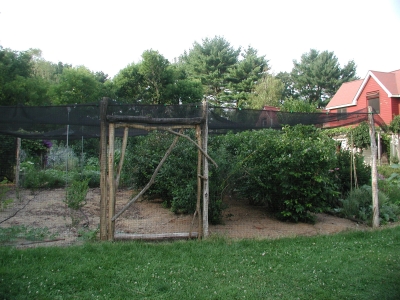 Don’t worry about the birds. They get their fill of berries elsewhere. I don’t net my lowbush blueberries, nor my mulberries or gumis. Birds don’t usually share the mulberries or gumis with me. This year, for some reason, they are sharing.
Don’t worry about the birds. They get their fill of berries elsewhere. I don’t net my lowbush blueberries, nor my mulberries or gumis. Birds don’t usually share the mulberries or gumis with me. This year, for some reason, they are sharing. Juneberries are related to apples and pears, not blueberries, and share some of their kin’s pest problems. Especially in my garden. They’re one fruit that didn’t grow well for me so, years ago, I finally dug the plants up.
Juneberries are related to apples and pears, not blueberries, and share some of their kin’s pest problems. Especially in my garden. They’re one fruit that didn’t grow well for me so, years ago, I finally dug the plants up.